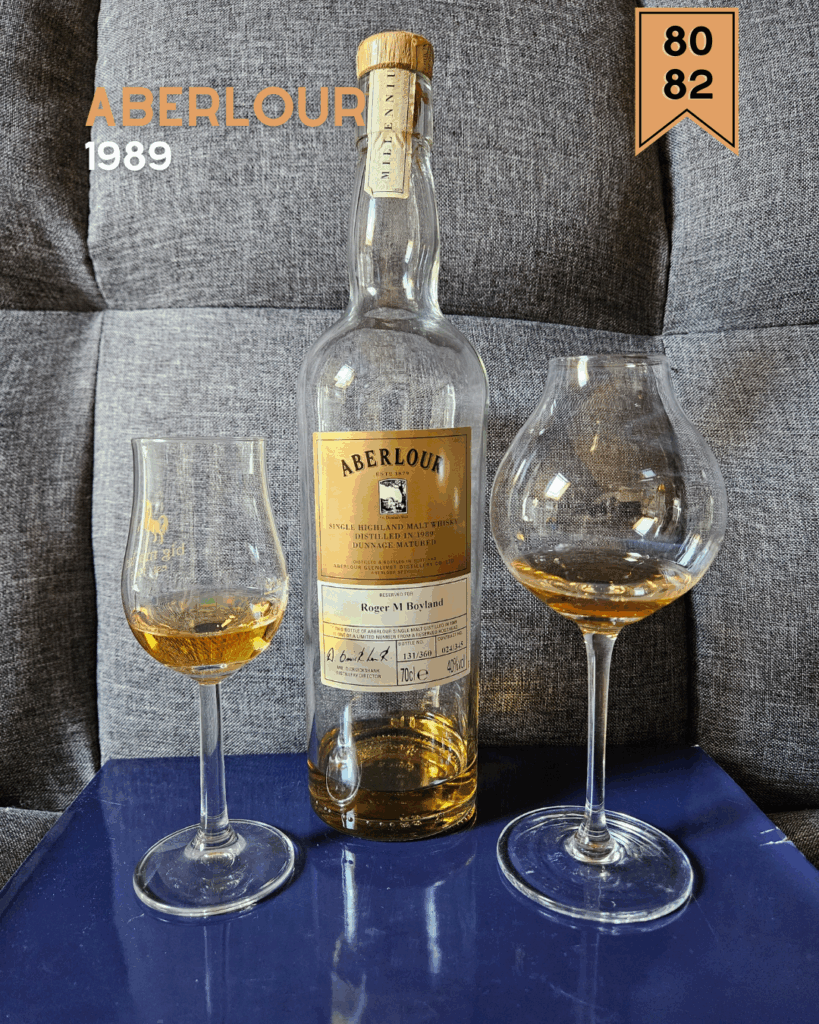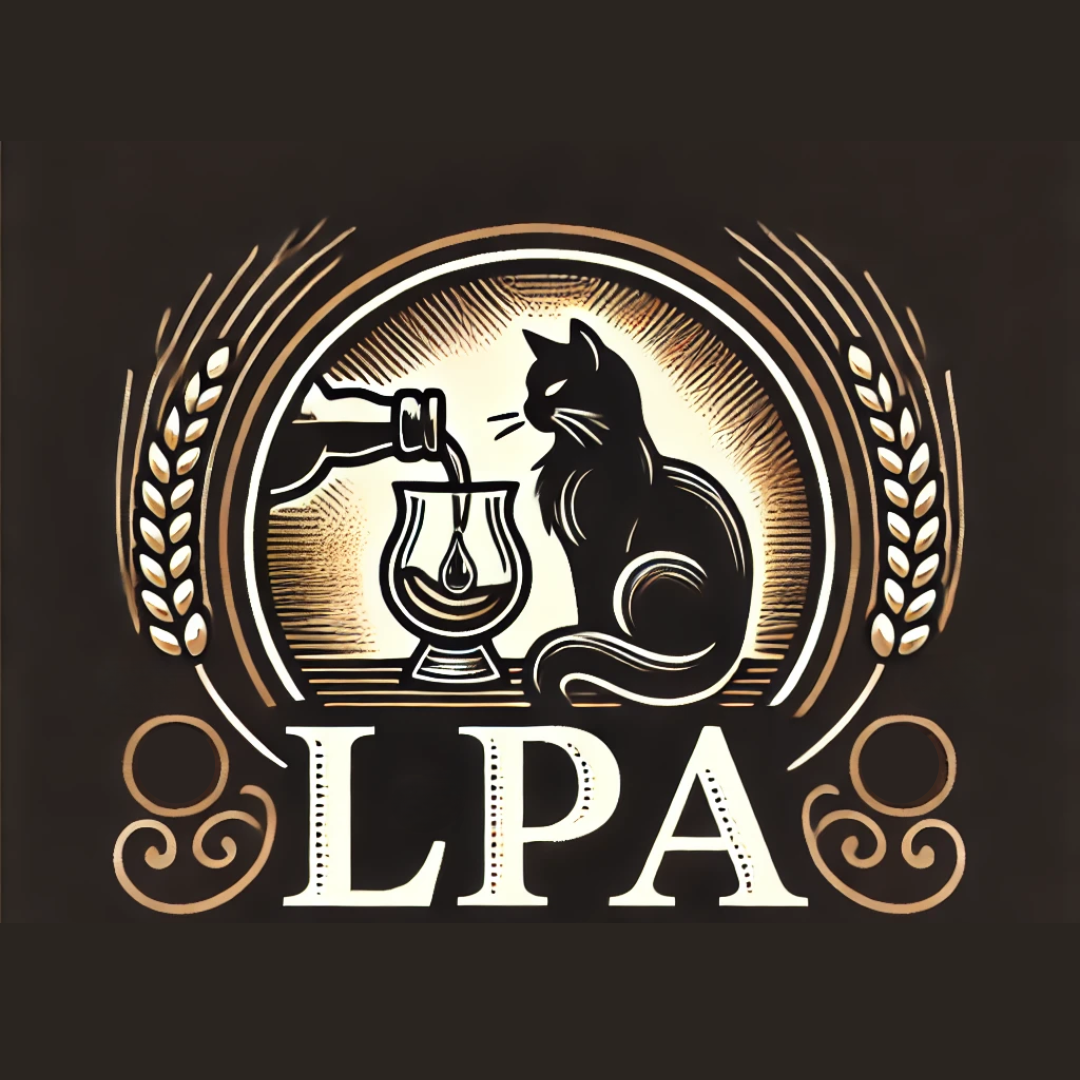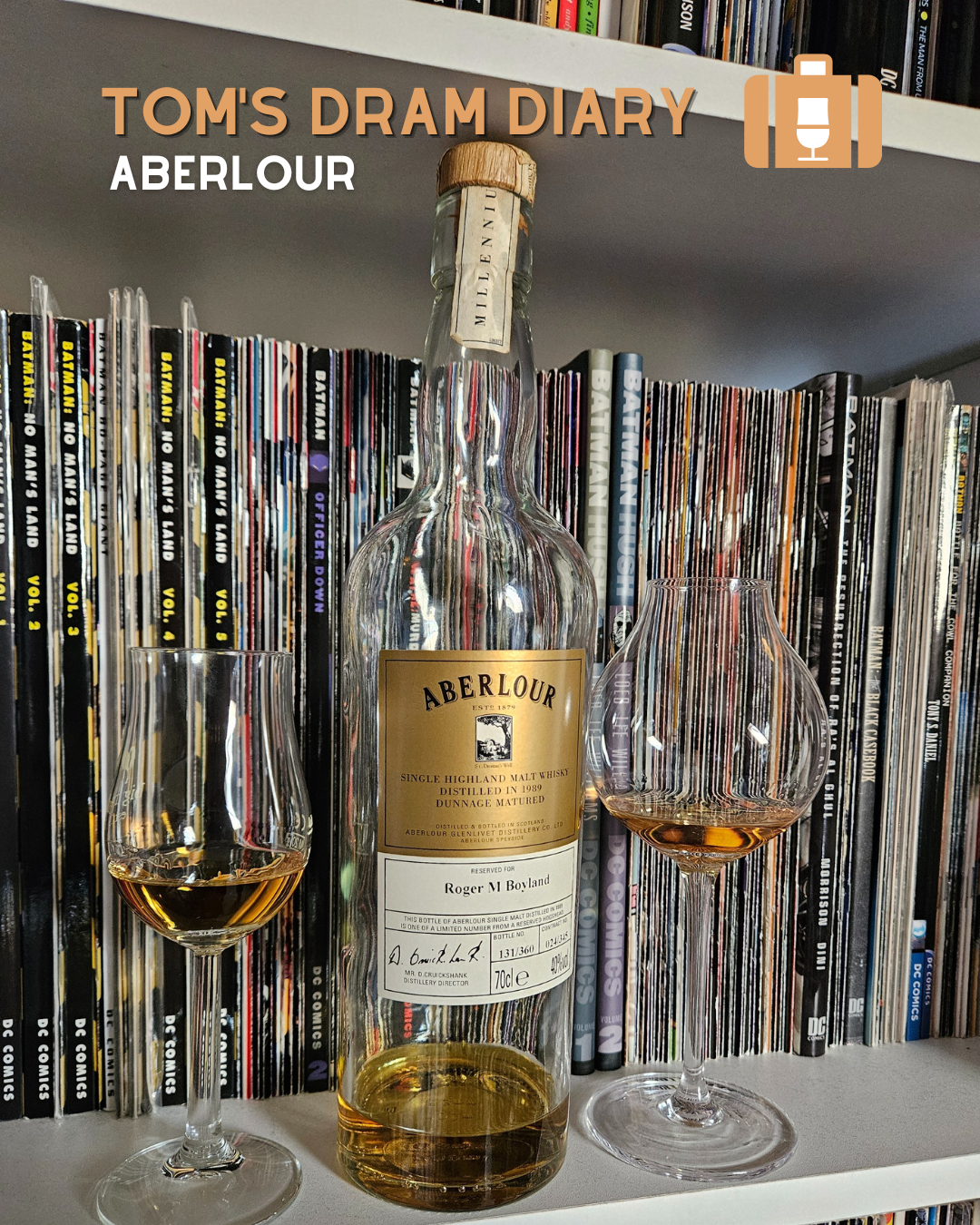The glasses head-to-head test with Aberlour
Having this blog opened new doors to meet likeminded people, and one of the new friends I made is Robbert from the Confession of a Whisky Freak blog. In this beautiful world we live in, it is entirely possible to get to know someone without ever meeting in person, or let’s say physically. Robbert and me started texting, I join in a tasting that he hosted online, and a few weeks ago I finally shared a dram with him. With his lovely daughter walking around, he (literally) cracked open an old blend, and we exchanged some samples. Totally worth the drive cross country, to that edge of civilization place he lives at. And there, the idea for this diary entry was born.
Robbert poured the glass of delicate old blend in – indeed – a so-called “blenders glass”. This is a somewhat onion shaped construct with a small opening at the top, which gives a concentrated sensation when sniffing your dram. One would say: excellent for the more delicate whisky, or the ones that are diluted to 40 % abv (the fear of every whisky enthusiast). I can see the joy in this nosing experience. The thing is, I do not really like the drinking from this glass. The design seems justifiably aimed at nosing indeed, but there is more to whisky, is there not?
That made me curious to how a whisky would present itself. For my blogs, I mostly use the Bugatti stem glass, or slight variations on that, like you can find during the Whisky Fair in Limburg or when you do a warehouse tasting at Cadenhead’s. A regular choice for many of us, is the glass that became a symbol of the surge of whisky into the mainstream. I am talking about the Glencairn. Strong, robust, but still amplifying the single malt in your glass. For today’s blog, I am going to taste the same whisky twice, from different glasses. We will use this Blenders Glass, which should be beneficial to the 40 % abv Scotch I am pouring, and my regular Bugatti.
A little titbit about the Speyside single malt favourite in the glass today. Robbert kindly gifted me the remaining cl’s of an Aberlour 1989, which was bottled in the Millennium series the distillery did around – you guessed it – the year 2000. Indeed, a 40 % abv whisky. Read my thoughts below!

Aberlour 1989 at 40 % abv in the Blenders Glass
Upon Sipping: Still rather fierce in the beginning, but after some swirling with the glass (which can be done with great beauty with this one) we pick up more. Sweet vanilla, some wood spices, and a slight nuttiness. Some warm bread, before this Aberlour comfortably settles on wood shavings. Quite a whisky ahead of its time when this was released, 25 years ago. It does become more fruity, something we pick up more immediately with the other glass. Taking a sip, the smoothness of this Aberlour is very rewarding. The palate is creamy and mostly on malty notes. Interesting to take an Aberlour without sherry influences, that makes the barley take centre stage. I like that.
Aberlour 1989 at 40 % abv in the Bugatti Glass
Upon Sipping: Less fierce, that is the big difference immediately, and more variation in the top layer of vanilla. I pick up peaches and apricot. After a while, it seems to mute a little, whereas the Aberlour in the blenders glass remains lively. Interestingly, while taking a sip from the other glass and writing down my notes, this glass came alive by just a little swirling. Now it is back to the apricot smell again. Somehow, I also think about Calvados. Yeah, it slowly moves towards green apples. Funny development, in the other glass the vanilla and wood remains dominant. The taste is (perhaps obviously) the same. Nice malty single malt whisky from Speyside, excellent.
Word to the Wise: First of all, the whisky speaks in the blenders glass, even at 40 % abv you can feel a tingle at the nostrils. Second, the glasses have no influence on the taste. Now, where the difference comes in: the Bugatti glass allowed the Aberlour top keep developing and opening up. The dominant smells of vanilla and wood shavings eventually made way for the fruity elements that this whisky has. I still have not picked them up from the blenders glass now. So, yeah, in short: my advice would be to go for the glass that leaves (more) room for oxidation, as this will create a broader, wider view of the whisky you are tasting. Based on this particular Aberlour of course. I will keep on experimenting with the blenders glass from now on, when I taste low abv whisky.
Score: 80 points in blenders glass, 82 points in Bugatti glass.

